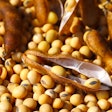With Russia lifting its grain export ban on July 1, there will at least be new supplies of grain coming onto the market. But life is never that simple. What can be given by one hand can be taken away by the other.
Weather
For feed producers struggling with high input prices and for livestock producers tying to cope with high feed prices, it may still be a little premature to breathe a sigh of relief. Russia may need to impose duties on exports to cap domestic prices, so the return of Russian exports, combined with other difficulties in the market, is going to do little do bring down prices and may simply act to offset difficulties in other areas.
Ukraine has recently taken steps to impose export duties, and here in the UK, we may be enjoying the warmest spring since records began, but it has also been dry – not good for this year’s harvests. There are also concerns over German and French production due to a dry Spring.
We all know that global demand for meat and consequently feed is continuing to rise. Where life continues to be unpredictable is the weather. Discussing the weather may often be laughingly seen as a national pastime in the UK, but its impact should never be forgotten. In the US at the end of May, soybean and wheat planting remained below 2010 levels due to wet weather in the eastern Midwest and northern regions.
Forecast
The latest International Grains Council outlook for 2011/2012 notes that reduced Northern Hemisphere prospects, either because of excessive dryness or too much moisture, are leading to lower global crop forecasts. At 1.803 billion tons, the IGC’s May forecast was 5 million tons below its April forecast, but still 70 million higher than in 2010/2011 and just above the 2008/2009 record.
The cut from April was mainly for wheat, reflecting the overly dry conditions in the southern US, much of Europe and parts of the CIS. The barley figure was also lower, but for maize, the reduced outlook in the US was balanced by a higher forecast for China.
With consumption still expected to outstrip output in the foreseeable future, if only by a relatively small margin, world carryover stocks in 2011/2012 are likely to dip further. These are projected at 338 million tons, down by 10 million from their forecast opening level. Total ending stocks in the major exporters in 2011/2012 are placed at 111 million tons, down by 3 million from this year’s forecast figure and the smallest since 2003/2004.
Interpretation of stock levels must be done with caution, IGC notes, taking careful account of a range of factors, such as their quality and geographical location, which can affect their availability to the global grain economy.
There were reports within days of the Russian announcement that Asian feed producers were making inquiries about securing supplies, however, Russia will want to replenish its own stocks and is unlikely to be flooding the market. The change in the Russian position may be welcome, but it is likely to make little difference to the overall outlook for the year ahead.



















